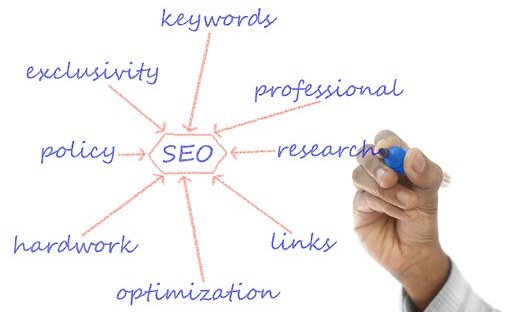
When I started to think about what I wanted to say at this talk, I began to sweat a little. Why was that? What was I worried about?
I realized it was this: I wanted to knock your socks off. I wanted to come off as smart, a great speaker, someone who brought you to tears, brought you to your knees, really handsome, who gave you value for your money tonight.
Then I realized: you’re not paying anything.
And I realized another thing: I was worried about failing at being something I don’t really believe I am. I’m not an amazing speaker: I’m a writer, dammit. I’m not incredibly handsome: I’m bald and aging.
So what if, instead, I let go of that fantasy of wanting to be something I’m not, and let go of the fear that goes with it? What if instead I just tried to be who I am, and let that be enough. I can’t fail at that, because it’s the truth. It’s reality, not a fantasy.
So here’s who I am, and you’ll see it tonight: I’m human. I stumble, and forget my place in a talk, and stutter a bit, and say umm and uhh. I have learned a few things, and I’ll share them. But I’m human.
This is the 1st truth of authenticity: the fear of failing goes away to a large part, when you’re not trying to reach a fantasy. You’re just letting reality show through, and the only failure is the failure to be honest.
Let’s back up and talk about why authenticity is important at all. Let’s take a longer view.
A hundred years ago, when our grandparents or great grandparents were kids, you’d go to a mom & pop business, where you could actually get to know the store owner, and they were human. They knew you, and cared about you because if they were a scammer, it would quickly become known and no one would trust them. That’s what a small community is like.
But that model was replaced by Walmart and other chain businesses, and customers became data points, and the people in stores and restaurants became tools, robots. The human-ness came out of the transaction.
My grandfather was the editor of the only newspaper on Guam, and people not only depended on him for information and context, but they could call him up, even have coffee with him and talk to him. He was replaced by chain newspapers and corporate magazines, who don’t want you to call them and won’t buy you coffee. They lost the human-ness.
Let’s put aside that old story and move to the Internet age, where newspapers were disrupted by blogs, like mine and many others. Books were disrupted by the same online publishing system. All of a sudden, millions of people were starting businesses online, not only online publishing but web apps and then mobile apps and youtube channels and Etsy stores and so much more …
These are human beings like you and me, and they want to know: how do you make any money online?
So they turned to the people who were already making money … there was Google and Amazon, but not everyone can build huge warehouses or be the world’s leading ad company …
Then there were Internet marketers with their email tactics and landing pages and popups and sales tactics … these learned from direct mail marketers before them … the guys who pioneered telemarketing and direct mail blasts and text marketing and infomercials and later email marketing. These are not new tactics, and they are not good — they’re very effective ways of squeezing the most money out of people in a short amount of time. Using the philosophy often attributed to P.T. Barnum … there’s a sucker born every minute.
That’s great if you want to make a quick buck, and I can tell you, millions of quick bucks are made. But it leaves the customer feeling slimy after awhile, and people quickly lose trust in these kinds of businesses … except the customers who are also trying to make a lot of money and want to learn from the masters.
The problem is that these types of tactics are focused on numbers: not only profits but email subscriber numbers, pageviews, Twitter followers, Facebook likes, churn rate. When you’re focused on those numbers, you will do everything you can to move the needle in the right direction.
Unfortunately, they’re looking at the wrong needle. These are numbers they’re trying to move, but they don’t realize they’re dealing with humans.
We shouldn’t try to move our numbers … we should endeavor to move people.
That’s the 2nd truth of authenticity tonight: the reality of our businesses is that we’re not dealing with numbers. We’re dealing with human beings.
Let’s start talking about the human side of businesses.
I had a good friend who got into selling Amway … or maybe you know it as multi-level marketing. He was sold on this business model, and believed he was going to make millions, if only he could get others to start their businesses under his umbrella. He bought products, marketing materials, DVDs, and went to conferences. He spent a lot.
He was encouraged to talk to his friends and family, and so I got invited to meetings where he’d show me this amazing business opportunity. I got pestered so much that it irritated me, and while I might have bought a few vitamins from him, we drifted apart and aren’t really friends anymore.
So here’s 3rd truth of authenticity: people don’t want to be friends with people who just want to make money off them.
I’m going to give you a couple more case stories, contrasting each other.
The first is of a guy who tried to sell me a product while I was walking past him on the sidewalk — he just got in my face and tried to push his product on me. I’m sure it was a perfectly fine product, but I don’t know this guy and certainly don’t trust that his rolex is real. So I didn’t buy.
Contrast that to a friend of mine who is a real friend, who has helped me numerous times and proven himself to me as trustworthy … when he wanted to expand his restaurant business, he explained his vision to me, of changing the world … I invested a large sum of money (for me … but I’m a cheapskate so operate on a different scale of angel investing).
So on one hand I have a stranger going up to me, who I don’t trust, and trying to sell me something off the bat, and I bought nothing … on the other hand, a trusted friend who I gave thousands of dollars to (OK, dozens). The difference? Well, one had a much better product, though it is definitely a risky investment … but the main difference was trust. I trusted this guy and believed in what he was doing.
That’s 4th truth of authenticity: you’re much more likely to do business with a person you really trust.
Here’s another case study: I have a friend who runs a successful tea business, and has lovely tea lounges with carefully cultivated atmospheres … it’s an amazing experience he’s designed, and I love going there.
And his website is also beautiful and a lovely experience … except that he had a popup to increase email subscribers. It was very effective, and so he didn’t want to get rid of it even though I told him to.
I asked him this: think about the great experience you’ve crafted in your tea lounges … what if, before the customer even got in the door, you shoved a sign in their face asking them to subscribe? You’d ruin the experience! They haven’t even had a chance to enjoy your great service. You’ve turned something wonderful into something irritating that they have to get past just to get to the peaceful space … and now they’re not in a peaceful state of mind.
Why ruin the experience with a popup?
That leads us to the 5th truth of authenticity: don’t irritate your customer. Get out of their way, let them do what they want, and don’t put obstacles in their way just to get your numbers up.
Here’s another case study, from my own writing: in 2008 I decided to copy the free software movement and uncopyright my blog and books. I was the first blogger to do this, as far as I know, and was one of the few authors doing it.
I was afraid that if I released copyright, I’d screw up my emerging business. I was giving things away, after all!
But not only did I not ruin my business, I did something that turned out to be incredibly important: I increased trust in me. People already liked my work (it’s awesome, after all), but when I made my work part of the public domain, they had such an interesting reaction that I didn’t expect … they were grateful. They thought that if someone shares and trusts others to do good things with his work … that person is trustworthy.
So that became a 6th truth of authenticity: when you share and when you trust people, you become more trustworthy. Releasing copyright, giving things away for free, being open and transparent … all increase trust.
I started to become a student of trust back then, and still am today. I notice that when I need to hire someone I don’t know, but I need to trust them …. I look to other people that I trust.
One example is when I needed an accountant / tax guy … it’s hard to trust a stranger with your books … so I turned to my friends, and one of them has a friend he really trusts who does a great job. I instantly trusted this stranger, my new accountant, and as I talked to the guy my trust increased because he seemed honest and doesn’t feel slimy like a couple other tax guys I’d talked to.
This has happened over and over … the guys who handle my investments were recommended by the same friends … the people I do business with online were recommended by trusted friends …
Now, there are lots of ways to show that you’re trustworthy … you show up regularly, you don’t keep trying to sell something to people, you show openness and transparency, you tell the truth. But being recommended by a trusted friend is one of the best trust indicators.
That’s the 7th truth of authenticity: trust is transferrable, to some extent.
And the 8th truth is this: trust is also erodable.
One day, a friend of mine offered to help me teach blogging to people. She was a wonderful, competent, trustworthy friend … and so I said yes. Why not help people find their way in the blogging world, teach them a few things I’d learned.
So we started a blogging program, and she called it A-List Blogging Bootcamps. I didn’t like the name, because it sounded too elitist, but I trusted her so I went with it. It turns out, she’d taken an Internet Marketing course and had a whole email campaign strategy that she put in place, with emails going out in my name.
We made a lot of money, giving away a free report that had “secrets” of blogging. But people said they were surprised, because the emails all seemed spammy. I agreed, and felt horrible. And people’s trust in me was eroding.
During the course of this business, I tried to work with my friend to not be spammy, but she was afraid of failing me. She knew these tactics would work, and didn’t want to fail, so she tried them over and over.
We eventually parted ways because of this. I left behind $10,000 per month (and growing) because the trust that people had in me was eroding.
I was afraid I’d lose my income, but my fear of losing people’s trust was greater. I walked away, because fear shouldn’t rule my decisions. Fear shouldn’t be stronger than a desire for trust.
That’s the 9th and most important truth of authenticity: people do inauthentic things, untrustworthy things, because of fear.
We fear not succeeding as a business. We fear this unknown, uncertain world. And so we find a model that seems to work: Internet Marketing. Direct Mail. Spam, popups, ads.
Fear drives people to do these things, and follow the Internet Marketers.
How do you let go of the fear? By letting go of the fantasy. We tend to instantly believe a fantasy when it pops into our heads (and is put there by the success stories of other businesses) … but that fantasy is not real. The truth of these other businesses isn’t what we fantasize about. These are just regular people like you and me, who’ve found some success but who are just as scared as you are.
So let go of the fantasy, and instead focus on the people. Be authentic. Be trustworthy. Be open and transparent. Show your vulnerabilities. Be honest when you don’t know something. Admit when you’re wrong. Be valuable. Help people. Change their lives. Treat them like human beings.
The Direct Marketers coined a term … “Call to Action”. I’m going to end this talk with a Call to Inaction.
Don’t go out and spam people. Don’t go out and try to build a massive list and make a billion dollars.
Instead, pause. Turn inward and see when fear and fantasy are driving you. Pause and be conscious about your actions, about your choices in your business.
Be curious. See whether you can be less spammy, less market-y, and instead treat people like human beings, and allow them to see you as an authentic human being.
This is a call for making conscious, authentic, trustworthy choices in your business. Because trust is more important than any number. And people are more important than massive profits.





















 I was once unemployed, and I know the debilitating depression and the feelings of frustration and helplessness that can come with that. I’ve been stuck in a job I hate, and I felt imprisoned, trapped doing work that bored me while following orders of others and helping them achieve their goals.
I was once unemployed, and I know the debilitating depression and the feelings of frustration and helplessness that can come with that. I’ve been stuck in a job I hate, and I felt imprisoned, trapped doing work that bored me while following orders of others and helping them achieve their goals.
